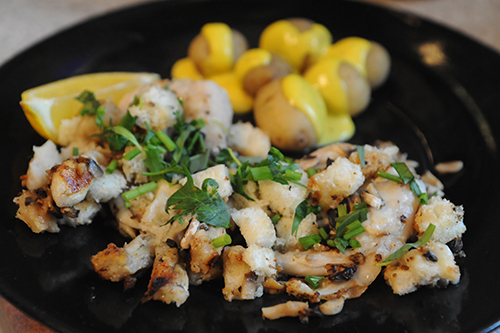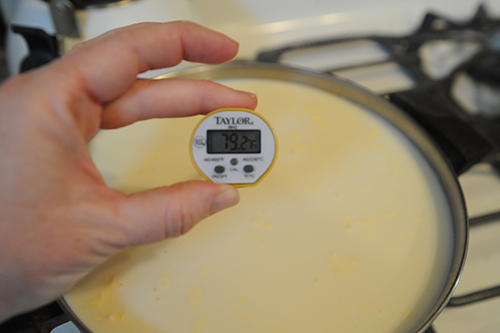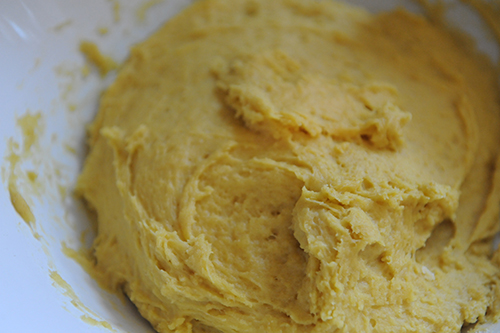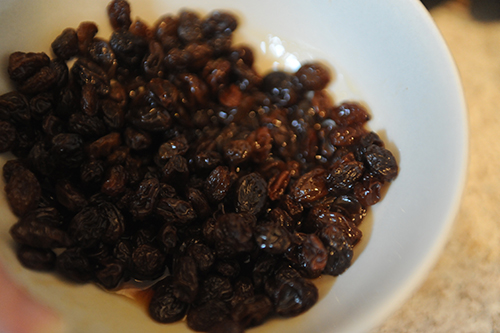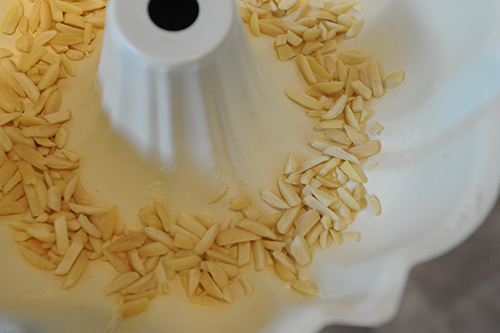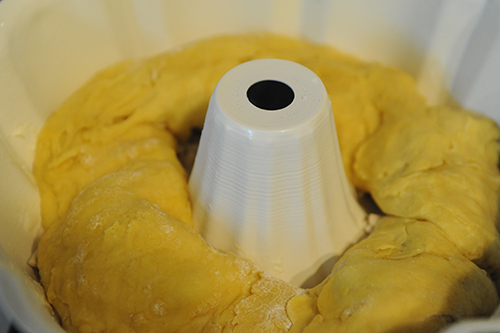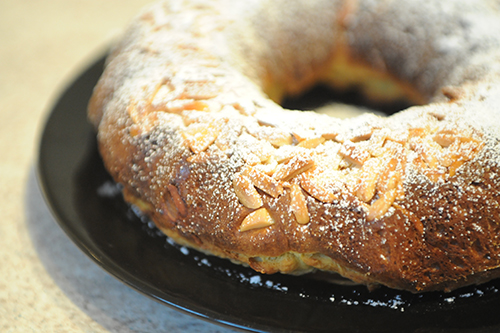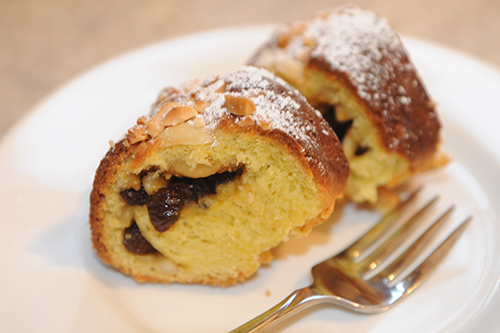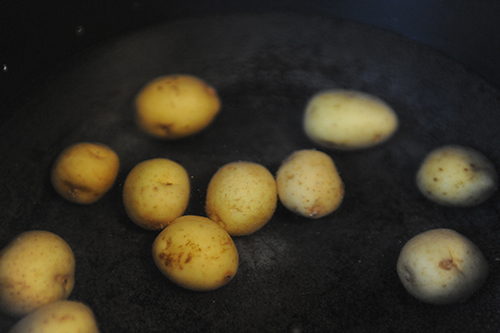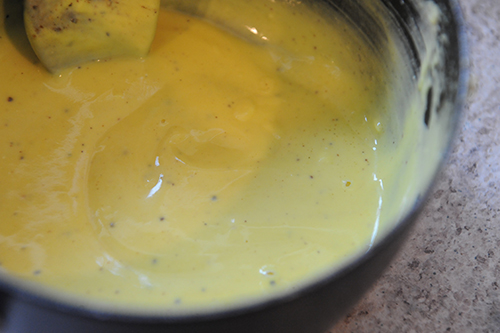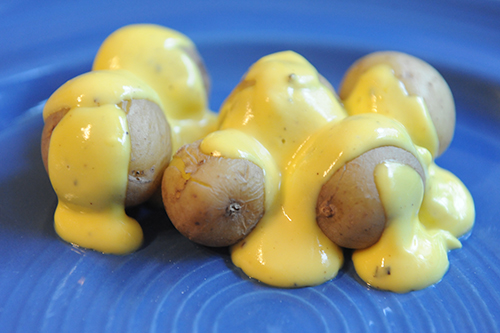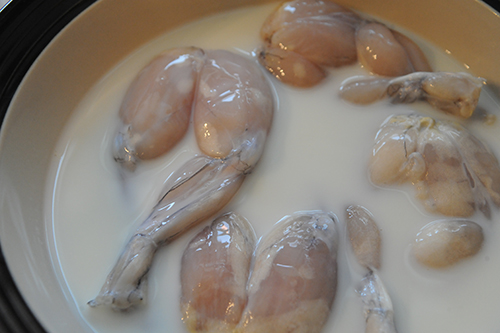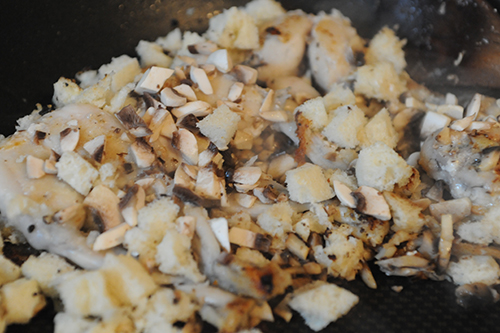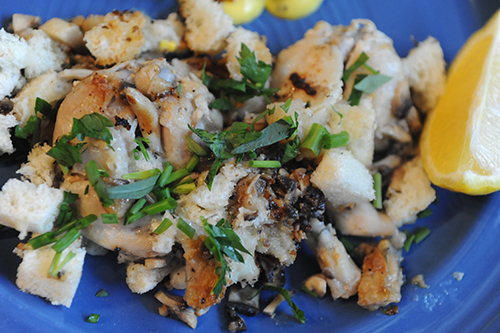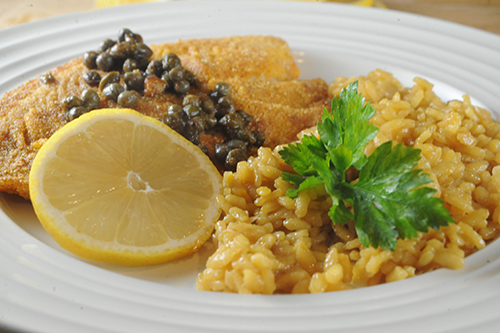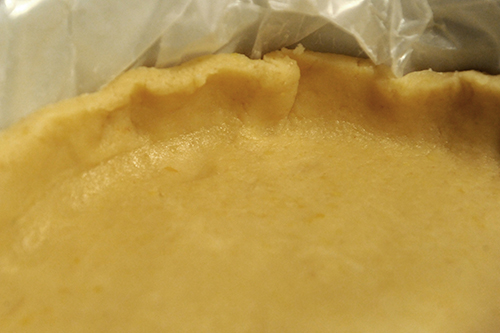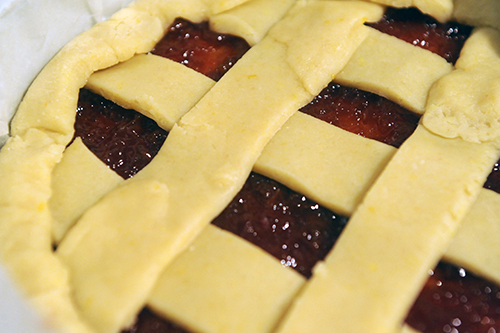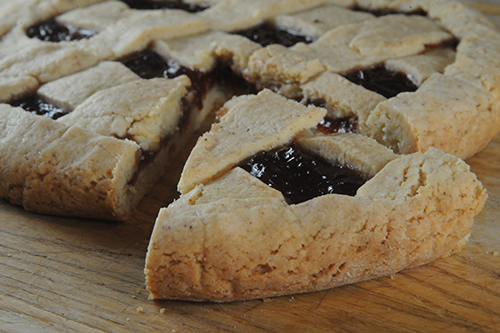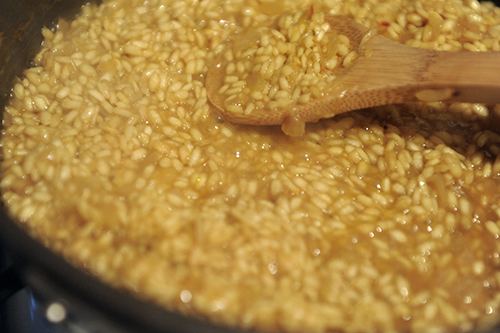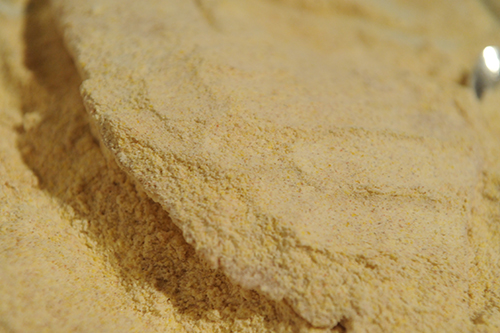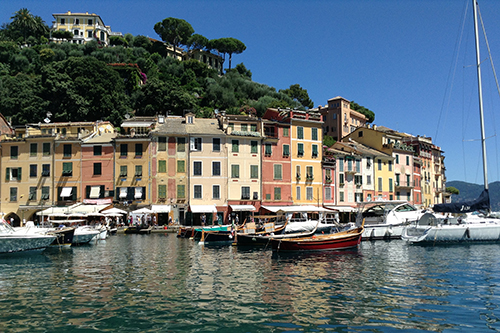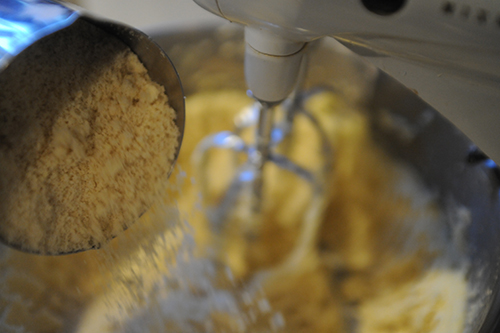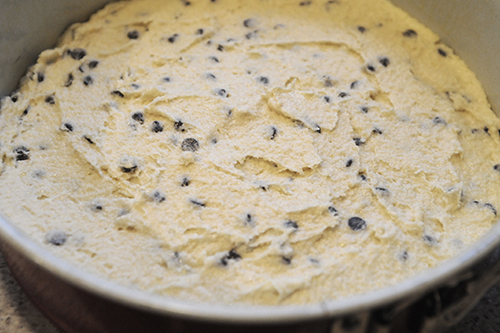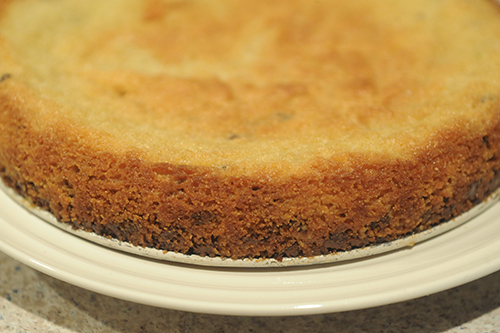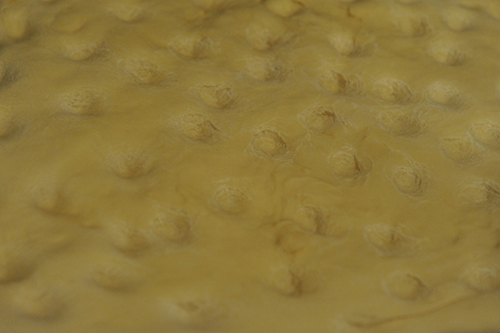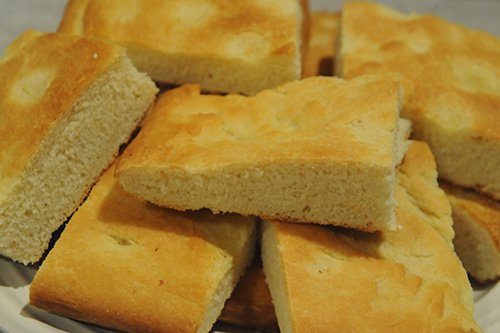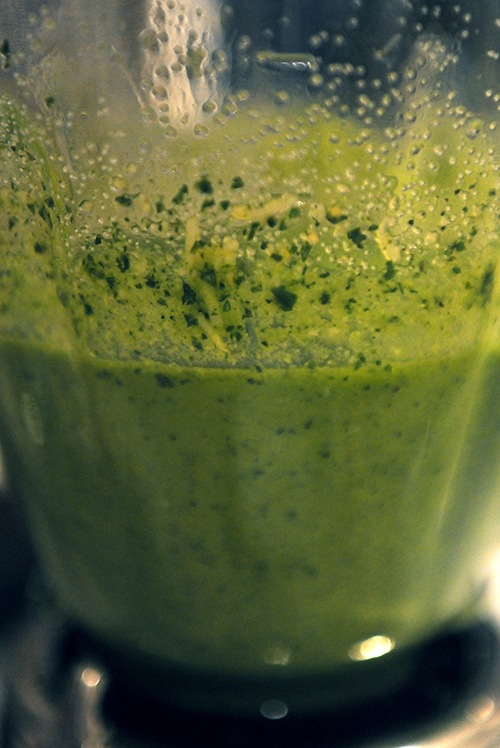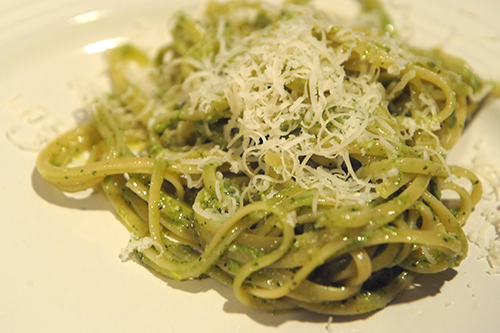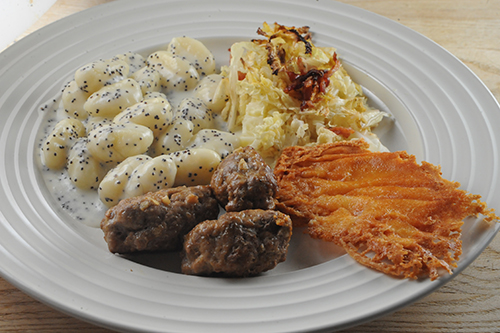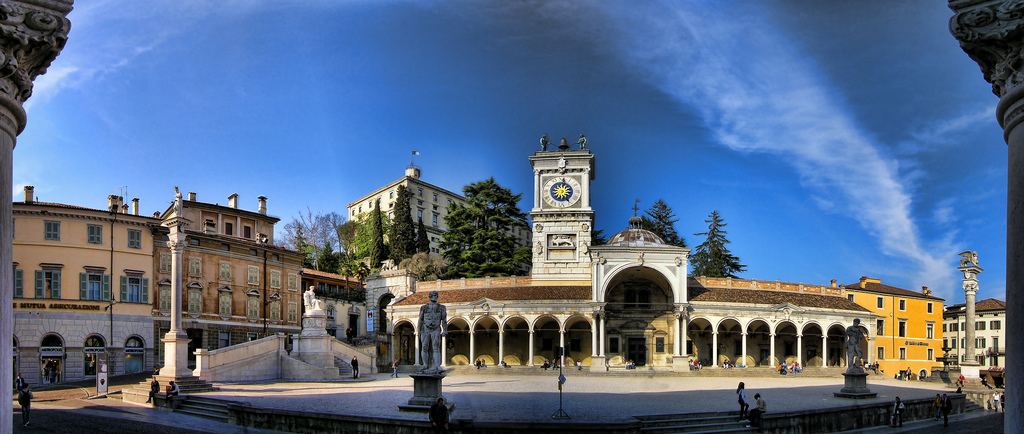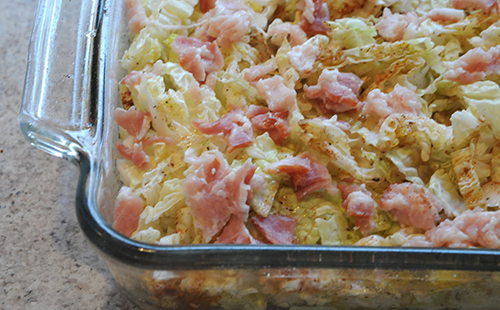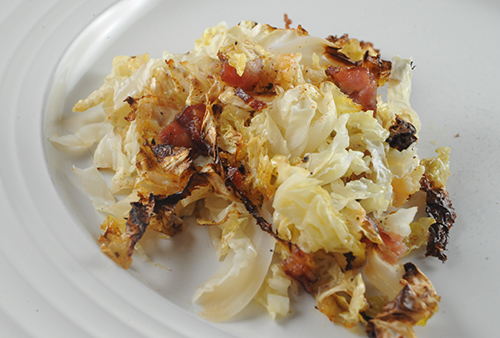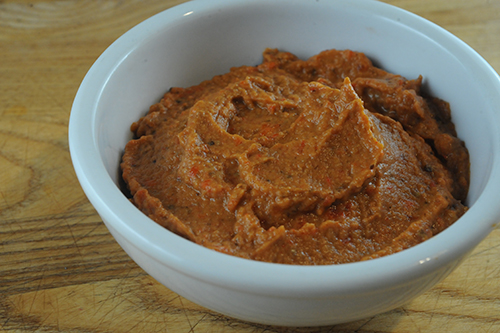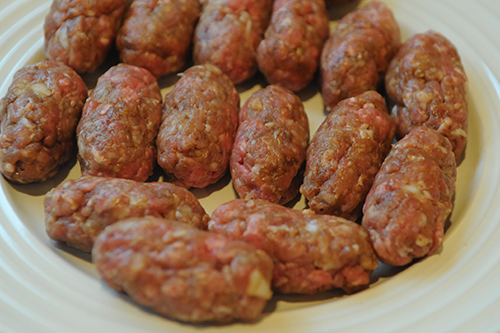OK so here's a funny thing. I cooked a meal from Lorraine and Alsace, France a long time ago. Like, almost two years ago. The main reason I went so far down the alphabet was because a few months before that I found some frog's legs at a local deli that carries the occasional package of exotic meat (I got some alligator filets there, too). I mainly just bought them because I wanted to try frog's legs. Or possibly because they were on that dumb Facebook list "The Food List Challenge" (yeah the alligator was on that list too). Anyway they sat in my freezer for a long time because I had no idea what to do with them. Finally, Martin told me I should really use up the frog's legs because they were taking up space.
The problem is it really seemed like a wasted opportunity to
not
use the frog's legs for Travel by Stove. So I skipped way, way ahead and
prepared them for Lorraine and Alsace, France. But here's the funny
part, it was so long ago now that I actually forgot that I did it, and
so a couple of weeks ago I cooked another meal from Lorraine and Alsace,
France. That's two meals from the same region. Hmmm.
So here's what I'm going to do, I'm going to post the frog's legs entry today, and you just need to pretend like you don't know I wrote it two years ago. And then next week, I'm going to post part two. Because I don't want to waste a good blog meal by not writing about it. OK, so here's part one:
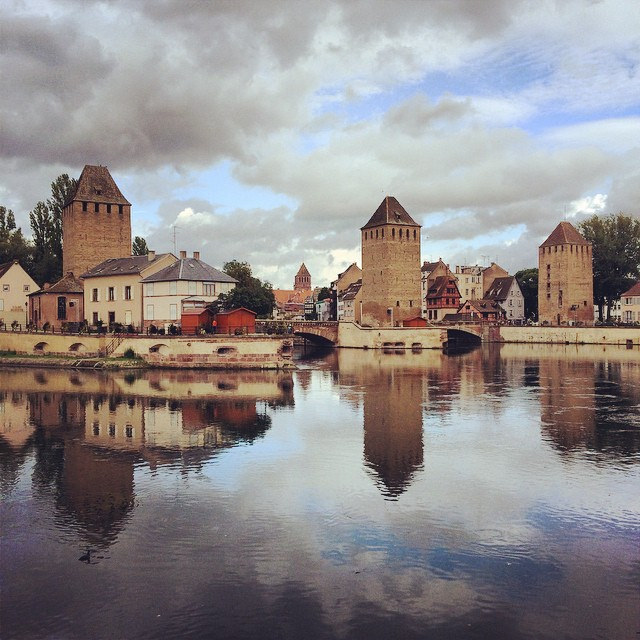 |
| Gare, Strasbourg, Alsace. Photo by grego1402. |
Lorraine and Alsace are two of France's easternmost regions, bordering Germany, Switzerland, Luxembourg. and Belgium. The largest city in Alsace is Strasbourg, which is widely considered to be one of the most important regions in the European Union; it is the seat of more than 20 different European institutions, including the Council of Europe and the European Parliament. You may also know Lorraine as the birthplace of Joan of Arc.
Culinarily-speaking, Lorraine and Alsace are often grouped together since the cuisines of that region are similar—the region's proximity to Germany of course means that there is a strong Germanic influence in many of the traditional recipes. Alsace in particular is famous for its foie gras (which is highly controversial and is actually now illegal in California, sort of--I think the whole mess is now in the courts) and is known for its vineyards.
All of my recipes came from a book recommended by a reader:
The Roux Brothers French Country Cooking
. This book is no longer in print, but it isn't difficult to find used copies, and it's a very good resource if you're looking for French recipes grouped by region (as I am). So for Lorraine and Alsace I chose the following three Roux Brothers Recipes:
Grenouilles à la Vitelloise
(Frogs' legs with mushrooms and herbs)
- 48 medium frogs' legs (I cut this recipe back considerably)
- 4 cups milk
- 3 tbsp flour
- 1/3 cup clarified butter
- 7 oz button mushrooms, diced small
- 3 oz slightly stale white bread, crusts removed and diced small
- 2 tbsp mixed herbs (tarragon, chives, Italian parsley), chopped
- Salt and freshly-ground black pepper to taste
- 1 lemon, quartered
A side dish:
Pommes de Terre Roncin
(New potatoes with a fromage blanc sauce)
- 1 1/2 lb new potatoes
- 11 oz semi-salted fromage blanc
- 2 eggs
- 1 tbsp heavy cream
- 1 tbsp flour
- pinch nutmeg
- Salt and freshly-ground black pepper to taste
And for dessert:
Kouglof
For the cake:
- 28 grams fresh yeast or 2 2/3 tsp active dry yeast
- 1/2 cup milk
- 2 1/2 tsp fine salt
- 4 cups all-purpose flour
- 6 eggs
- 1 1/2 cups butter, room temperature
- 1/3 cup sugar
For the filling:
- 1 1/2 cups raisins
- 3 tbsp rum (I used a dark rum)
- 1/3 cup whole almonds, blanched and lightly toasted
- 1 egg yolk
- 1 tbsp milk
- powdered sugar for dusting
You will also need a kouglof mold, but if you don't have one I really wouldn't spend the money, unless you've had kouglof and can see yourself eating it all the time. I used a bundt pan for mine. It was the wrong shape, but I'm pretty sure that doesn't make a difference to the flavor.
So of course after I settled on this menu, I tried to find fromage blanc locally. Naturally, I was unable to, because that would have been too easy. I did find some on iGourmet.com for $5 but it was $25 to ship, so forget that. So guess what I did? You'll never guess. I made some fromage blanc using a culture I found at the New England Cheesemaking Supply Company.
I've made cheese before but it was much more complicated than making fromage blanc—to make fromage blanc you just need to heat your milk to 86 degrees, add the culture, stir and let sit overnight. Then you put the curds in a piece of cheesecloth and hang them up for a few hours. When you're done, you have fromage blanc, which by the way makes an awesome cheesecake.
So anyway if you're going to cook up this meal keep in mind that you need to start from five or six hours to one day in advance. I, of course, being me, did not know this because I didn't bother to read the recipe ahead of time. But you've read this blog, so you know better. Here's how to get started on the kouglof, which takes the most time:
Mix the ingredients together to make a dough. It's going to be a pretty wet dough (I added extra flour to mine because it seemed too wet). After chilling you will need to be able to roll the dough out so you won't want it to be too sticky. Add flour if you need too, but not too much.
Now put the dough in the fridge and chill for at least 2 hours and up to 24.
Meanwhile, mix the raisins with the rum and let soak for a few hours, until the raisins are plump and most of the rum is absorbed.
Butter your pan and put about 1/3 of the almonds in the bottom, then chop the rest and set aside.
Turn the chilled dough out on a floured surface and roll it into a long rectangle shape. Scatter the raisins and chopped almonds over the dough and then roll it lengthwise, pressing the edges of the dough together to seal.
Transfer the dough to your kouglof pan, pressing down lightly. Seal the edges with a little bit of the egg wash, then let rise in a warm place until the dough has doubled in size (because the dough started out cold, it will take a little longer to rise than most bread dough will).
Preheat your oven to 425 degrees and bake the kouglof for 10 minutes, then reduce heat to 400 degrees and bake for another 35. Note: in my oven this was way too long. My kouglof burned. Watch yours carefully so this doesn't happen. You can cover it with greaseproof paper if it starts getting brown too early in the process.
I skipped this step because I wasn't using a kouglof mold, but if you are take your kouglof out of the oven and remove it from the mold onto a wire rack. Return it to the oven for another five minutes, which will give the center time to cook. Remove from the oven and let cool.
Dust the kouglof with powdered sugar and serve.
OK now the potatoes:
Put the potatoes in a pot and cover with cold water. Add a little salt and bring to a boil. Cook for 30 minutes or until tender, then remove from the heat but don't drain. Just let them sit in the cooking water.
Now add the fromage blanc to a saucepan and heat gently until it melts. Keep stirring so it doesn't stick. Meanwhile, beat the eggs together with the cream and flour. When the cheese is melted , add the egg and cream mixture and whisk. Keep whisking for 8 to 10 minutes, then remove from heat and add the nutmeg, salt and pepper.
Drain the potatoes and pour the sauce over them. Serve.
Finally, the frogs' legs. Mine came trimmed, but if yours didn't you will need to cut off the "fingers" (ew!!) and a small part of the backs. Now put the legs in a bowl and pour the milk over. Let soak in the fridge for two hours.
After the legs have soaked take the out of the fridge and pat dry. Season lightly with salt and pepper.
Melt the clarified butter over high heat and then add the frog's legs, searing for 3 minutes or so or until they are golden. Stir occasionally to prevent sticking.
Now reduce heat to medium and add the mushrooms and diced bread. Let cook for 5 more minutes, add salt and pepper and cover the pan. Let simmer for 2 minutes more.
Remove from heat and scatter the herbs over the legs. Serve hot garnished with a lemon quarter.
So, if you're the sort of person who would not eat frogs' legs because, you know, ew, let me reassure you that they actually taste pretty good, if you can get past that "ew" factor. They are not slimy or bizarrely textured, they are just little pieces of meat (though I did find them a little stringy). I did have an awful lot of fun dangling them in front of my horrified children, though.
Frogs' legs taste a little bit like chicken but there is a definite fresh-water fish flavor to them as well. Mine were a little dry—I don't know if that's because I overcooked them (I really wanted them to be done, because though I am familiar with the bacteria that haunts pork and chicken I have no idea what kind of bacteria can be found in frogs) or if it was just because they were in my freezer for too long. But they were really good with the herbs and mushrooms, which I think kind of softened the whole "you are eating frog" blow.
The potatoes with homemade fromage blanc were super-tasty. The fromage blanc is a little bit tangy and the sauce reflected this. I'm glad I made a pretty small portion because I don't think I would have been able to eat a whole lot of that very rich sauce.
My kouglof, as I mentioned, was burned. I still liked it, though. I wish it hadn't burned, but the inside was really tasty and had a nice texture that was somewhere between a bread and a cake. It wasn't overly sweet like an American dessert and the almonds gave it a nice crunch.
Well, that was easy! I should cook stuff two years early more often, haha.
Next week: Lorraine and Alsace, France, part II
